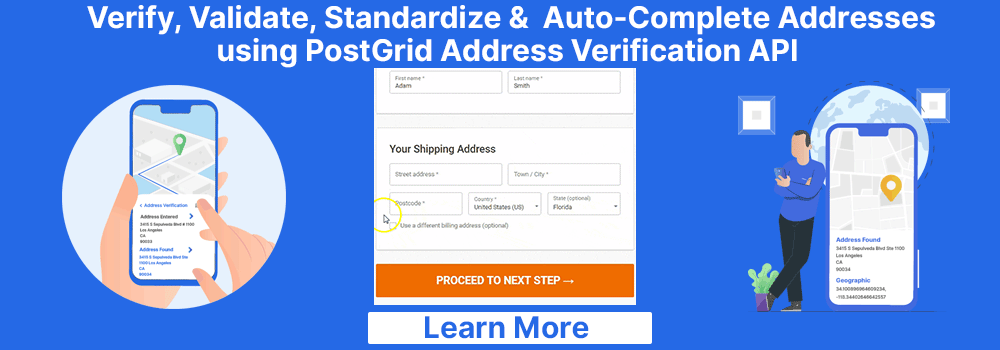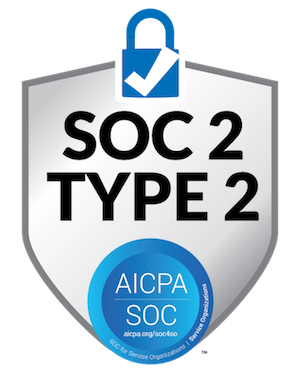
Thailand Post Address Validation: How Does it Work, Shortcomings, and Its Alternative
King Rama V established the first Postal services and Telegraph in 1883. Today, it processes around 836 million domestic mail pieces annually. The postal service manages a massive network, handling multiple postal services in the region. But how do they manage deliverability, considering the country’s complex areas? How can a business operating in Thailand avoid delays, misdelivery, and return mail?
Thailand Post recently launched Digital Post ID as an address validation solution to help individuals and businesses validate addresses against their official database. This solution can support mail deliverability, marketing campaigns, and location intelligence. However, as a new solution, many Thai citizens must register with Thai Post to obtain their Digital Post ID code. Can businesses solely rely on this solution, which is still in its infancy? This blog will be a complete read to help you understand Thailand Post address validation, its working mechanisms, a better alternative, and the Thai postal address format.

Key Takeaways
- Thailand address validation helps avoid misdelivery, delays, and return mail.
- Digital Post ID is a new address validation solution by Thailand Post.
- Users can easily convert their postal address into a QR code.
- Address validation requires ensuring correctness, parsing, completeness, and formatting.
- Users can use Digital Post ID codes to pinpoint a postal service on a map.
- Learning “Soi” and “Moi” helps you name side streets and rural areas in Thai addresses.
- Thailand Post’s EMS tracking helps you monitor domestic and international mail shipment status.
- Thailand Post address validation relies on people registering for the Post ID Code service.
- Businesses can’t expect bulk validation features with Thailand Post address validation.
What is Thailand Post Address Validation?
Thailand Post address validation refers to checking mailing addresses against the country’s official postal address database to ensure their existence and deliverability. It helps individuals and businesses to avoid delivery errors, delays, or returned mail. Validation technology spots human errors to save valuable time and money. However, this validation also means correctness, parsing, completeness, and formatting/reformatting according to postal standards.
Thailand Post provides a Digital Post ID service that converts postal addresses into digital and QR codes. It helps you pinpoint the address on a map, which is ideal for identifying the addresses of people living in high-rise apartments. Thailand Post developed this technology to save time and protect private information.
What is Soi and Moo When Writing Thai Addresses?
You should know how to write Thai addresses in English correctly. But how do you handle local words if you don’t speak Thai? Learning “Soi” and “Moo” makes writing Thai addresses effortless.
“Soi” is a Thai word for “side street.” Large Thai roads have many streets that branch off them. These streets have numbers or names. For example, “Soi Hua Hin 102” becomes #102 in the Hua Hin area. This Soi number is critical for postal workers and courier companies to locate the exact street of the address. The delivery process might slow down if you only provide information about the main road. Soi numbers are often more common in cities and towns.
“Moo” is often found in rural areas or sometimes subdivisions. It refers to a village or a smaller community cluster. Thai addresses assign numbers to villages under the subdistrict to which they belong. This system is vital for identifying rural addresses in the country.
How Does Thailand Post Address Validation Work?
Thailand Post doesn’t offer a comprehensive address validation solution to help you instantly validate and standardize a Thai postal address. However, you still have some options to save the day.
Digital Post ID
Thailand Post introduced a unique ID system in 2022 as an alternative to the five-digit postal codes. The previous system, which has been effective since 1982, often confuses individuals and businesses. A Digital Post ID can help pinpoint addresses and tell you the vertical coordinates.
It saves time and protects the recipient’s private information. To prevent scammers from exploiting the code, the QR code is converted into a new one each time businesses make a delivery.
Digital Post ID saves the hassle of writing addresses manually, which is often more susceptible to typos. Businesses can avoid sending their shipments to the wrong address or facing failures. However, this system is still in its infancy. To obtain a Digital Post ID code, Thai citizens must register with Thailand Post. In the future, the system will be helpful in delivery routing, fraud prevention, urban planning, financial services, tourism, natural resources management, and agriculture planning.
EMS Tracking
Thailand Post also provides an EMS tracking service to monitor domestic and international mail shipment status. You just need to enter a valid 13-digit code to get real-time updates on your mailing. The first two letters indicate the EMS service, the following nine-digit number shows the unique shipping identifier, and the last two digits denote the country of origin. You can track up to 10 items simultaneously by separating each entry with a comma.
Post Office Finder
Businesses can also use their Post Office Locator tool to find the nearest service point to access postal services from Thailand Post. In the search box, you must enter a valid postal, ZIP, or location. It will fetch you a list of Post Office offering different services.
Why is Your Mail Undelivered to a Thai Address?
Your Postal Code is Incorrect
Thailand uses a five-digit postal code system, but each digit represents a particular address element. It makes it difficult for non-Thai people to identify and use the correct postal code for an address. A single mistake in this code can send the package to a different province, district, or region. Always double-check that you are entering the correct postal code for your addresses.
The Address Either Doesn’t Exist or Incomplete
The lack of validation features from the official postal carrier of Thailand makes it possible to write an invalid address while dispatching mail. It is hard for postal workers to deliver such mailers with invalid or incomplete addresses accurately. Businesses prefer using third-party address validation tools to maintain the highest accuracy for their mail and packages, ensuring deliverability.
Language Issues
Individuals and businesses face challenges when writing addresses in the Thai language despite the presence of popular transliteration and transcription systems. A non-native speaker always finds it hard to identify tone, vowel length, and sound distinctions in Thai. These linguistic barriers often make addresses unreadable for postal workers, leading to failed deliveries, delays, and return mail. They need a third-party solution to transliterate Roman Characters into Thai to support accurate mail addressing.
The Address is Not Properly Formatted
Thailand has one of the most extended address systems, comprising seven lines. You must follow the proper sequence to ensure your address is valid and standardized in the official format. Addresses that are not standardized result in failed deliveries, delays, or return mail. Before sending mail or packages, you should always consider standardizing your addresses according to the Thai Post format.
Addressing Tips for Sending Mail and Packages to Thailand
- Abbreviations: Thailand Post uses multiple abbreviations for various address-related terminologies, including ตู้ ปณ for Post Office box, Rd. for road, and No for Number.
- Language: Thai is the official language of Thailand and is used to address domestic mail. English is still acceptable for International mail. The Royal Thai General System of Transcription (RTGS) is the most common method for writing Romanized Thai.
- Alignment: All Thai addresses are left-aligned to help postal workers for ease of reading and mail processing.
- Municipalities: Thailand has municipalities, or Thetsaban, which are local government units for each urban and rural area. You must consider them when writing Thai addresses.
- Postal Codes: Thailand uses a five-digit postal code system. The first digit identifies the region, the second and third digits show the province or city, and the last two highlight the specific district or subdistrict. Therefore, you must pay close attention to the postal code when writing it in your mailings.
Thailand Post Address Format
A Thai address typically has up to seven lines. Begin by writing the recipient’s full name with an appropriate title. Next, provide a proper building number or street name. Don’t use separating punctuation when writing the details in the second line. In the following line, write about the local area; it could be a small town, village, or part of a city.
The following line should mention the municipality where the address is present. The fifth line should have the city name followed by the postal code in the next line. This information is enough to address domestic mail in Thailand. However, for international mailings, you should always write “THA” in the last line as a short form of Thailand.
Here is what the format should look like:
| Recipient name
Building number and street name Local area Municipality City Postal Code Country |
Your sample address would look like this:
| Mr. Somchai Wong
123/456 Phahonyothin Road Lat Yao Bangkok 10900 Thailand |
Shortcomings of Thailand Post Address Validation
No Address Validation Capabilities
Thailand Post address validation’s new Digital Post ID depends on the recipient to share their code with the sender. Businesses can’t run proper validation against official databases until the customer has registered with Thailand Post for the digital code. It is impossible to run validation using Thailand Post’s system for customers without digital codes. The postal service’s address validation approach highly depends on the number of registrations they get for Digital Post ID. Businesses cannot expect to have real-time address validation capabilities for the highest accuracy.
System Doesn’t Help You Standardize Inputs
Standardized addresses are critical for helping postal workers understand the delivery point and make accurate deliveries. However, using the Thailand Post address validation system does not allow you to fix inconsistencies or sequence mistakes. You constantly depend on customers to provide you with their digital codes to obtain a validated address.
Absence of Address Autocomplete
Due to language barriers and complexities, people often make typos while writing Thai addresses. Thailand Post address validation might solve this problem by converting addresses into QR codes. However, these codes are for one-time use, and customers must register with Thailand Post to use the service. For example, they would still need to upload the QR code to a business’s landing page to input their address. Thailand Post’s implementation does not include address autocomplete features.
Limited Coverage
Thailand Post address validation only covers recipients registered with their new Digital Post ID service. This means that thousands of addresses are still not covered by the validation system, which might lead to failed deliveries, delays, or returned mail. The validation approach is still in its early stages and requires registration from every Thai resident. You may be unable to find some residential and commercial addresses while relying on this system. A global business cannot confirm the authenticity of addresses by only using Digital Post IDs.
Businesses Can’t Run Bulk Validation Tasks
An average business can handle thousands of customer addresses. Despite implementing Thailand Post’s Digital Post ID system, they can’t validate addresses in bulk. It requires them to scan QR codes manually, one by one, to validate addresses against the official database. There’s no scope for saving the maximum amount of time by validating thousands of addresses at once.
Lack of Integrations for Business Use Cases
Most businesses desire the best convenience while handling customer data. However, they won’t find integration possibilities with Thailand Post address validation to create custom workflows that save time, effort, and money. The Digital Post ID system requires them to manually scan QR codes or type codes into their website or mobile app, which is tedious. Companies with high-volume address data cannot rely on Thailand Post’s Digital Post ID data for validation or standardization.
What's a Better Thailand Post Address Validation Alternative?
As mentioned above, Thailand Post address validation highly depends on its new Digital Post ID system. Because this system is relatively new, many must register with Thailand Post to access the service. Even after its complete implementation, it is still inefficient for high-volume tasks. Businesses sending mail or packages to Thailand should seek a more scalable, reliable, and efficient alternative that provides real-time results.
PostGrid’s Address Validation API provides complete solutions for businesses of any scale to validate, verify, standardize, geocode, auto-complete, and clean address data. It uses multiple authoritative databases as reference points to validate your address data with the highest accuracy. Thus, you don’t need to rely solely on Thailand’s Digital Post ID system to fetch your customers’ correct addresses.
Our solution can run bulk validation for up to 200,000 addresses in a single run. Native integrations help you build custom workflows to validate, standardize, and clean addresses. Integrate our API into your website or mobile application to get auto-complete suggestions, saving time and effort during validation. We also give access to premise-level data to enrich your postal addresses with unit indicators for higher deliverability.
Thailand Post vs PostGrid Address Validation: Which is Better?
| Criteria | Thailand Post | PostGrid |
| Address Validation | Users must register with Thailand Post to provide a unique Digital Post ID. | Our solution gives you real-time address validation against credible databases for accuracy. |
| Format Standardization | There’s no format standardization available with Thailand Post. The system won’t correct inconsistencies if you make mistakes. | PostGrid automatically standardizes the input address according to the officially accepted format of Thailand Post. |
| Address Autocomplete | Businesses must still enter the entire Digital Post ID code to fetch an address, adding unnecessary keystrokes. | PostGrid’s solution provides up to 100 suggestions for each input, reducing keystrokes and saving time for validation. |
| Bulk Validation | You can’t validate high-volume address data in batches even after Thailand Post fully implements the Digital Post ID. | Using PostGrid’s address validation solution, businesses can simultaneously validate and standardize up to 250,000 addresses, saving time and effort. |
| Mail Tracking | Thailand Post’s EMS tracking system only lets you track 10 items simultaneously. | You can almost track an unlimited number of shipments in real-time with PostGrid. |
| Premise Level Data | You don’t get secondary address data with Thailand Post address validation to pinpoint the delivery point. | PostGrid enriches your address data with unit indicators to help improve deliverability and location intelligence. |
| Use Cases | Thailand Post address validation is mainly helpful for checking the deliverability of a mailing address. | PostGrid is helpful for mailing purposes, marketing campaigns, and business intelligence. |
| Coverage | You can only validate postal addresses in Thailand with the Digital Post ID system. | PostGrid gives you international coverage of over 245 countries and territories. |
Contact us today to validate, standardize, and cleanse your Thailand address database with automation at scale.




 Also Read:
Also Read: 





